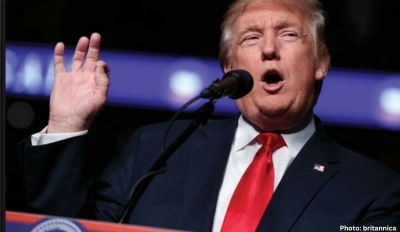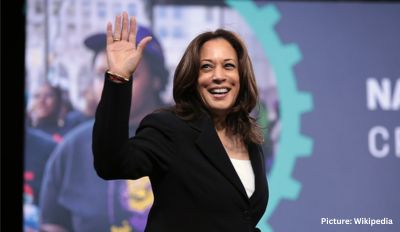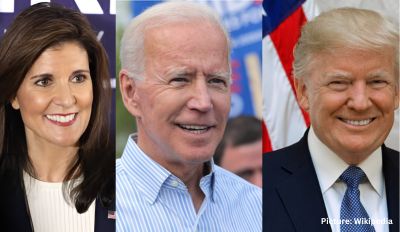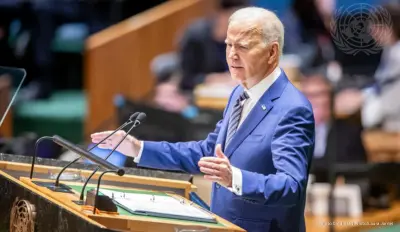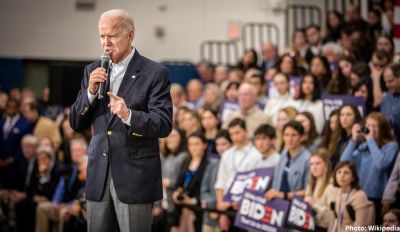President Joe Biden has appointed more judges to the federal courts at this stage in his tenure than any president since John F. Kennedy, and his appointees include a record number of women and racial and ethnic minorities, according to a Pew Research Center analysis of data from the Federal Judicial Center.
As of Aug. 8, the first day of the U.S. Senate’s August break, Biden has successfully appointed 75 judges to the three main tiers of the federal judicial system: the district courts, appeals courts and U.S. Supreme Court. That’s far more than the number appointed by Donald Trump (51) and Barack Obama (42) at the same stage in their presidencies, and slightly more than the number appointed by several other recent presidents – including George W. Bush (72), Bill Clinton (74) and Ronald Reagan (72) – by this point in their tenures.
Among all presidents going back to Dwight D. Eisenhower, only Kennedy had appointed more federal judges than Biden at the same stage of his tenure. Kennedy had appointed 102 judges by then, far outpacing the total of every other modern president in the same amount of time. (This analysis begins with Eisenhower because he was the first president to be inaugurated to a first term on Jan. 20.)
How we did this
Most of Biden’s appointed judges to date (57 out of 75, or 76%) have been district court judges, who preside over criminal and civil trials. A much smaller share (18 out of 75, or 24%) have been appeals court judges – the powerful jurists who are a level above district court judges, hear federal legal appeals and often have the last word on interpretations of federal law. Biden has also appointed one justice to the nation’s highest court: Ketanji Brown Jackson, who formally joined the Supreme Court in June. Biden had previously appointed Jackson to an appeals court position.
Trump, by comparison, had appointed a much smaller share of district court judges at this point in his presidency than Biden (26 of 51, or 51%), but a much larger share of appeals court judges (24 of 51, or 47%). Like Biden, Trump had also successfully appointed one Supreme Court justice by this point in his tenure: Neil Gorsuch. Over the full course of his presidency, Trump reshaped the federal judiciary – particularly the higher courts – by filling a large number of vacancies on the appeals courts and the Supreme Court.
Federal judicial appointments are consequential not only because of the important rulings that judges issue, but because federal judges have lifetime tenure and typically serve for many years after the presidents who appointed them have left office. The average Supreme Court justice, for example, has served on the court for nearly 17 years, according to a 2017 Center analysis of all former justices at the time.
Biden’s fast pace of judicial appointments to date partly reflects the fact that Democrats control the U.S. Senate, which considers and confirms presidential appointees. It also reflects the fact that judicial nominees can now be confirmed with a simple majority vote in the Senate – unlike in the past, when such nominees needed 60 votes to overcome the threat of a filibuster. The current Senate is evenly divided between Democrats and Republicans, but Democrats control the chamber due to the tiebreaking vote of Vice President Kamala Harris.
There are currently 72 vacancies for judgeships in the nation’s district and appeals courts (including some territorial courts), according to the Administrative Office of the U.S. Courts, suggesting that Biden still could fill dozens of seats in the months ahead. But the pace of his judicial appointments will depend on several factors, including whether Republicans take control of the Senate next year.
Most of Biden’s appointed judges have been women, racial and ethnic minorities
In addition to the large overall number of judges Biden has appointed so far, the 46th president stands out for the many women and racial and ethnic minorities he has appointed to the bench.
As of Aug. 8, around three-quarters of Biden’s confirmed federal judges (57 of 75, or 76%) have been women. Biden has appointed by far the highest number and share of women judges of any president at this point in his tenure.
Biden has also appointed the highest number and share of non-White federal judges of any president at this stage in his administration (49 of 75, or 65%). His confirmed judges so far include a record number who are Hispanic (13) and Asian (10), but he has appointed slightly fewer Black federal judges than Bill Clinton had at the same point in his tenure (18 vs. 20).
Most of the Black judges Biden has appointed to date (14 of 18) are women. That includes Jackson, who is the first-ever Black woman to serve on the Supreme Court. So far, only four of Biden’s 75 judicial appointees (5%) have been White men, by far the lowest share among all presidents analyzed.
In addition to demographic diversity, Biden has emphasized professional diversity in his judicial appointments to date. An analysis by the Brookings Institution in January found that Biden had appointed a record number of former public defenders to federal judgeships in his first year in office.
Biden has appointed around one-in-ten currently active federal judges
Another way of looking at the effect that each president has had on the federal judiciary is to evaluate the share of currently active judges who were appointed by each chief executive.
As of Aug. 8, there are 790 active federal judges serving in the 91 district courts and 13 appeals courts governed by Article III of the U.S. Constitution, as well as the Supreme Court. Biden appointed 9% of those judges, a relatively small figure that reflects the fact that he has only been in office for about a year and a half.
Other recent presidents have appointed larger shares of currently active judges. Trump appointed 28% of active federal judges, while Obama appointed 35% and George W. Bush appointed 17%. Not surprisingly, relatively few judges who are still active today were appointed by presidents who served more than two decades ago – including Clinton, George H.W. Bush and Reagan.
The current federal judiciary is closely divided between appointees of Democratic presidents, who comprise 52% of all active judges, and of Republican presidents, who account for 48%. But that breakdown varies by type of court. More than half of currently active district court judges were appointed by Democratic presidents (53%), while a smaller share (47%) were appointed by GOP presidents. The reverse is true in the appeals courts, where 53% of active judges were appointed by Republican presidents and 47% were appointed by Democrats. The Supreme Court consists of six justices appointed by Republican presidents and three justices appointed by Democrats, a 67%-33% split in favor of GOP appointees.


